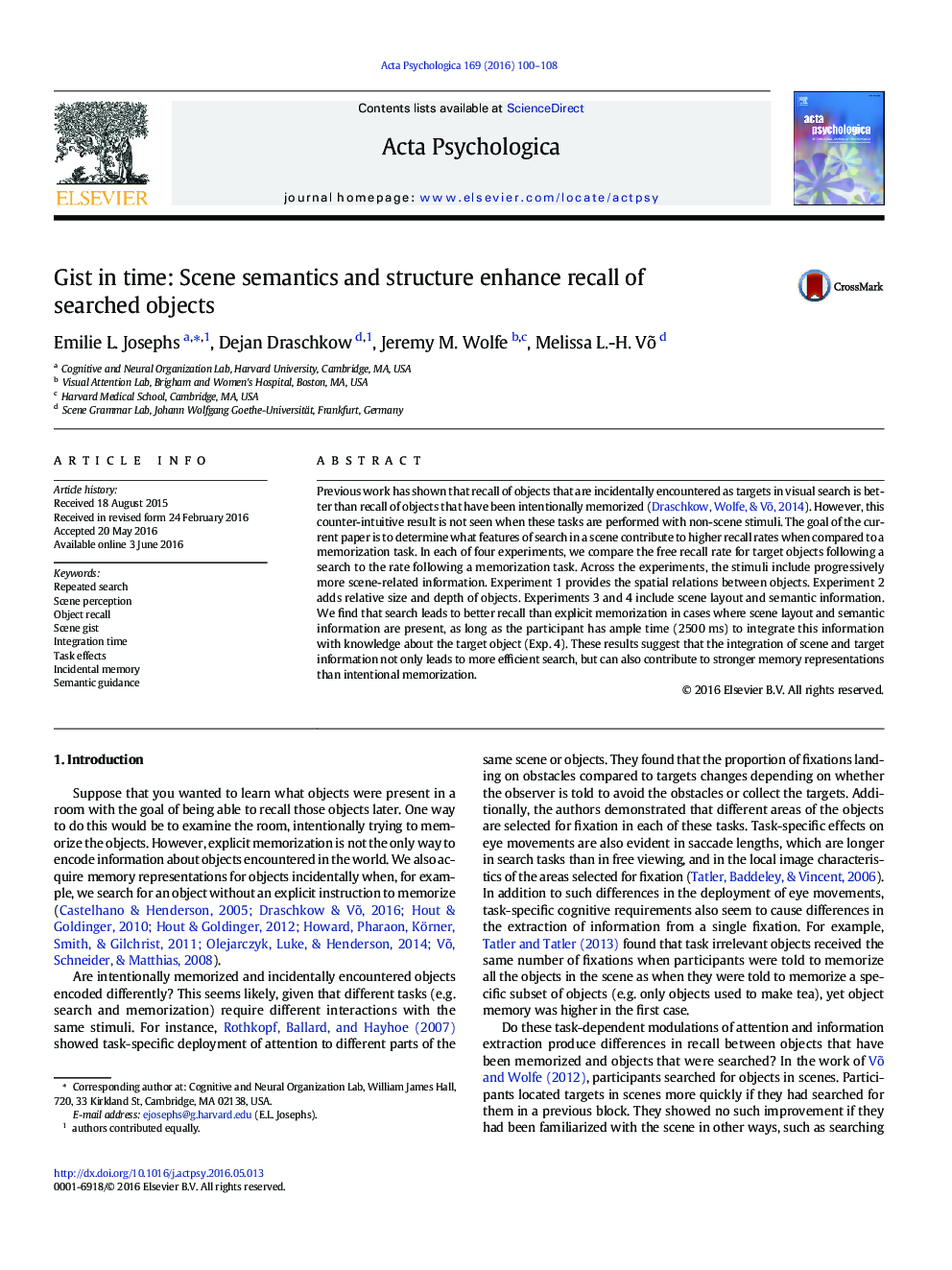| Article ID | Journal | Published Year | Pages | File Type |
|---|---|---|---|---|
| 919627 | Acta Psychologica | 2016 | 9 Pages |
•Targets in scenes are recalled at higher rates after search than after memorization.•This difference is not found if the stimuli are non-scene collections of objects.•Adding known spatial relationships between objects does not reinstate the effect.•Flash preview of a scene reinstates the effect, but only after fairly substantial integration time.
Previous work has shown that recall of objects that are incidentally encountered as targets in visual search is better than recall of objects that have been intentionally memorized (Draschkow, Wolfe, & Võ, 2014). However, this counter-intuitive result is not seen when these tasks are performed with non-scene stimuli. The goal of the current paper is to determine what features of search in a scene contribute to higher recall rates when compared to a memorization task. In each of four experiments, we compare the free recall rate for target objects following a search to the rate following a memorization task. Across the experiments, the stimuli include progressively more scene-related information. Experiment 1 provides the spatial relations between objects. Experiment 2 adds relative size and depth of objects. Experiments 3 and 4 include scene layout and semantic information. We find that search leads to better recall than explicit memorization in cases where scene layout and semantic information are present, as long as the participant has ample time (2500 ms) to integrate this information with knowledge about the target object (Exp. 4). These results suggest that the integration of scene and target information not only leads to more efficient search, but can also contribute to stronger memory representations than intentional memorization.
